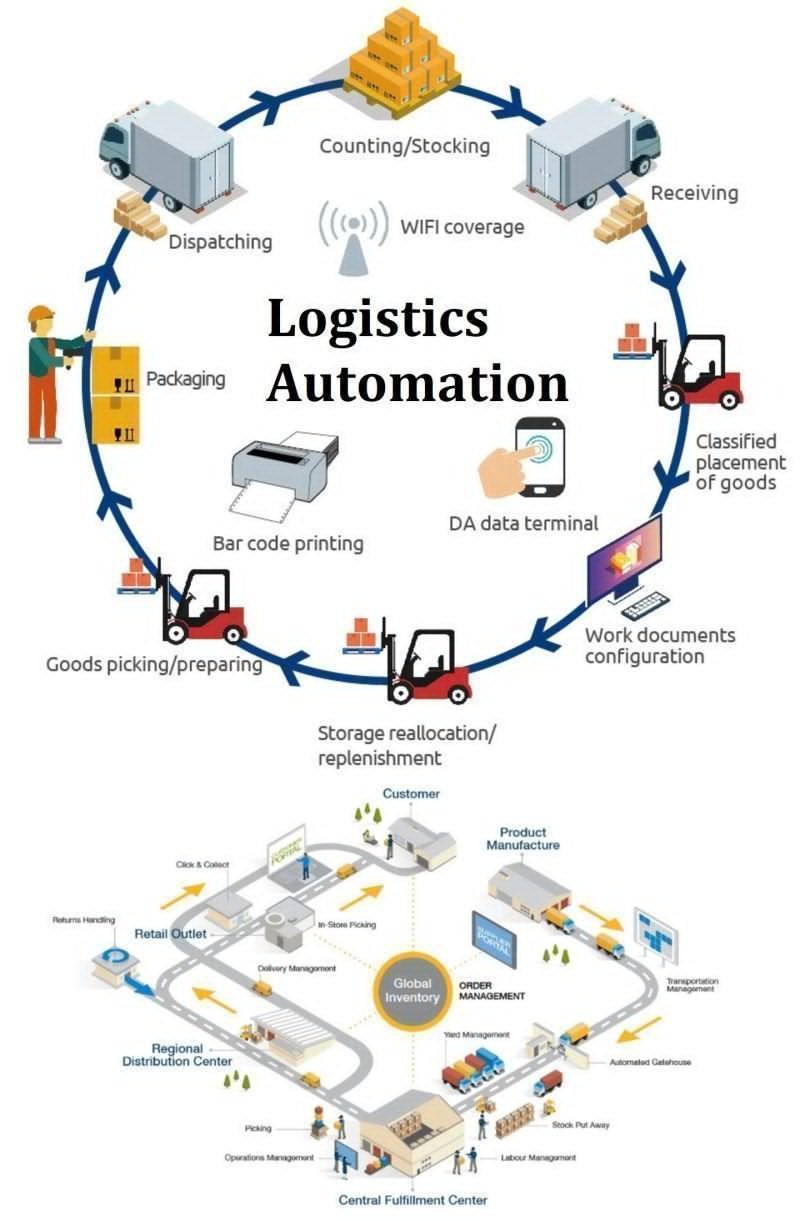Table of Contents
- What is Logistics Automation?
- Key Components
- Market Growth and Projections
- Benefits of Logistics Automation
- Market Drivers and Challenges
- Leading Industry Players
- Future Trends
Logistics automation integrates machinery, control systems, and software to optimize logistics processes. The global market, valued at $49.7 billion in 2020, is projected to reach $147.4 billion by 2030, growing at 11.9% CAGR.
Key components include automated guided vehicles, robotic arms, autonomous mobile robots, AS/RS systems, and management software. The industry is driven by e-commerce growth, Industry 4.0 adoption, and advancing robotics technologies.
Benefits include real-time data access, improved organizational control, enhanced customer service, and increased operational efficiency. Major players like Honeywell, Daifuku, and SSI Schaefer lead the market.
Current trends focus on AI integration, machine learning, and data analytics. While high initial investment poses challenges, opportunities exist in autonomous vehicles, drones, and emerging market demand. The sector is rapidly evolving with increased adoption of warehouse robotics, sorting systems, and automated solutions to meet growing online delivery demands.
Leading companies include Mecalux, Murata Machinery, Jungheinrich AG, Beumer Group, and Kion Group AG, driving innovation in this transformative industry.
What is Logistics Automation?
Logistics automation represents the integration of advanced machinery, sophisticated control systems, and specialized software to enhance the efficiency of logistics operations. This technology-driven approach revolutionizes how businesses handle their supply chain management and warehouse operations.
Key Components
Modern logistics automation systems incorporate several critical elements:
- Automatic Guided Vehicles (AGVs)
- Robotic Arms and Collaborative Robots
- Autonomous Mobile Robots (AMRs)
- Automated Storage & Retrieval Systems (AS/RS)
- Warehouse Management Software (WMS)
- Transportation Management Software (TMS)
Market Growth and Projections
- Current Market Value (2020): $49.7 billion
- Projected Market Value (2030): $147.4 billion
- CAGR: 11.9% (2021-2030)
Benefits of Logistics Automation
- Real-time Operations Management
- Instant access to loading data
- Live analytics and reporting
- Dynamic resource allocation
- Enhanced Organizational Control
- Improved inventory accuracy
- Better resource utilization
- Streamlined workflows
- Customer Service Excellence
- Faster order processing
- Improved delivery accuracy
- Enhanced tracking capabilities
- Operational Advantages
- Increased scalability
- Improved processing speed
- Enhanced safety measures
Market Drivers and Challenges
Growth Drivers
- Rapid e-commerce expansion
- Industry 4.0 technology adoption
- Advanced robotics implementation
- Workforce safety requirements
Challenges
- High initial investment costs
- Integration complexities
- Technical skill requirements
Leading Industry Players
- Mecalux, S.A.
- Murata Machinery, Ltd.
- Honeywell International Inc.
- Jungheinrich AG
- Beumer Group GmbH & Co. KG
- SSI Schaefer Group
- Daifuku Co., Ltd.
- Kion Group AG
- TGW Logistics Group GmbH
- Knapp AG
Future Trends
Emerging Technologies
- Artificial Intelligence integration
- Machine Learning applications
- Advanced data analytics
- Autonomous vehicles and drones
- Smart warehouse solutions
Market Opportunities
- Growing demand in emerging economies
- Warehouse automation expansion
- Integration of IoT technologies
- Sustainable logistics solutions



